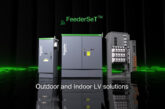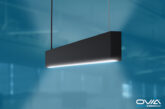
Jake Green, Technical Engagement Manager at Scolmore Group, takes a look at how the consumer unit (and in particular, the devices within them) are continuing to evolve to meet future requirements.
For many years consumer units, which house essential circuit protection for domestic installations, have been fundamentally the same. Combining a main switch with a bus bar plus neutral and earth bars, the components of the consumer unit really haven’t changed that much. The devices within the units, however, have undergone almost constant change over the years. Advances in technology and manufacturing have brought about new methods of offering automatic disconnection of supply, short circuit protection and over current protection. Improvements in manufacturing has ensured that today, these operations are offered by one common device. With protection against over voltage and arc fault taking centre stage recently, we need to look at how we can combine these devices to offer the maximum level of protection to the end users of our installations well into the future.
Surge protection
Surge protection came into the UK wiring regulations many years after some of the continental European countries had mandated them. This saw manufacturers try to apply the solutions they were using in Europe to meet the needs of the UK market. Although our consumer units are fundamentally the same as our European counterparts, there were some teething problems in the beginning. When first introduced, there wasn’t much mention of the need to coordinate them with an over current protective device. The next amendment to the wiring regulations saw changes that ensured designers and installers protected the Surge Protection Device with an appropriate over current device. Some manufacturers then took it upon themselves to engineer their SPDs to incorporate over current protection or to offer it via a separate device. At the moment choosing either of these solutions results in the loss of two outgoing ways within the consumer unit for many manufacturers. The race is now on to engineer a combined device that only occupies one outgoing way.
AFDDs
Arc Fault Detection Devices are due to become commonplace, if, as we believe, the proposed changes to the wiring regulation make it through to the next amendment, which is due for publication in March 2022. Currently BS 7671 only recommends their use. However, we’ve seen a number of early adopters embrace the technical merits of these devices and offer them to their clients. We’ve also had report of clients asking for them until they realise the cost of the device. The current high cost of these means they are not a viable option for everyone. We also saw this problem when RCBOs were first introduced. It is believed that AFDDs will be required for a number of final circuits supplying socket outlets. If this is the case, electrical installers will need to discuss the financial implications with their clients. Currently it is possible to enclose the AFDD technology within the same housing of many RCBOs. Many manufacturers have aimed to do this in a one module device. The challenge for manufacturers was to keep the device height low enough to allow for the installation of cables above the device once it was installed.
RCDs
RCDs have seen a number of physical changes over the years and we believe the biggest change to the technology is still yet to come. These protective devices have historically been of Type AC and were perfect for the older style installations with mostly resistive loads connected. This would have looked like tungsten filament lights, plus resistive heating elements for heating and cooking. In today’s world where gadgets are commonplace and lighting is mostly LED, we need an RCD that will continue to work with a small amount of residual DC present due to the connected loads. If the DC was allowed to sit across a Type AC device the direct current could stop the device working within its maximum time as permitted by the UK regulations. It is understood that direct current can create DC blinding of the AC type RCD.
The importance of selecting the right RCD
This is why it is very important to select the most appropriate RCD to meet the need of the installation. Instrument manufacturers used this blinding effect to their advantage in the past when they wanted to gain a Zs reading without the protective device tripping. More and more manufacturers of electrical appliances are recommending a higher type of RCD to protect their appliance, such as type F or type B. With the majority of installers questioned confirming that they have opted to install RCBOs, we know that the problems related to selectivity of devices will be reduced. Designers must ensure that the types of RCDs selected will ensure that DC sensitive devices will not be compromised by the DC present downstream. Currently type F and type B devices are hard to come by, but that could change if demand increases. Having more types of RCDs/RCBOs available will result in the designer needing to take note when using these different devices in one installation.
We have chosen to only make Type A devices available in the new Elucian range of circuit protection. This has caught a few contractors out as they are relying on their old testers to test the new devices. A Type A device must be tested differently from the older style Type AC. Those that have not changed the settings on their test instrument to the new type have reported receiving high readings, very close to the maximum allowed. Others have reported the devices failed to disconnect within 40ms. Our technical support team have been able to help installers and testers by talking them through the steps to change the settings on the test instrument. The immediate future of our protective devices is almost mapped out, and the next amendment to the wiring regulations will confirm what electrical designers and installers need to do to comply. However, as we move toward a prosumer future, the consumer unit that we understand today may look very different if we start to incorporate many of the renewable and energy efficiency devices we will be encouraged to include in future installations. As a result, the small consumer unit may be a thing of the past.
To view the new Elucian product brochure click here










